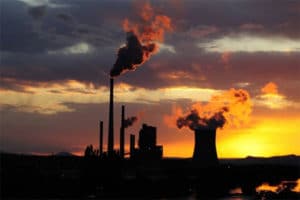- Danielle Smith, Alberta’s premier, has positioned herself as a staunch advocate for fossil fuels, rooted in her background as a lobbyist and her deep connections to the oil and gas sector.
- Her policies, including a controversial pause on renewable energy projects, reveal a vision for Alberta that prioritizes tradition over innovation.
- But with global energy markets rapidly evolving, is Smith leading Alberta forward—or holding it back?
Alberta Premier Danielle Smith’s tenure has drawn intense scrutiny for her administration’s resistance to renewable energy expansion in the province. This resistance stems from Alberta’s entrenched reliance on fossil fuels, the significant role oil and gas play in the provincial economy, and Smith’s own political and professional background.
While the province boasts an enviable solar energy resource that could drive renewable energy deployment and job growth, Smith’s policies and rhetoric have tilted heavily in favor of fossil fuels, often at the expense of the renewable energy sector.
Economic Reliance on Oil and Gas

Generated from the decomposition of ancient plant and animal matter over millions of years. Coal, oil, and natural gas are fossil fuels.
Alberta is Canada’s oil and gas powerhouse, with the industry contributing billions to the provincial economy. The sector supports approximately 140,000 direct and indirect jobs, making it a cornerstone of Alberta’s financial stability.
Smith has consistently championed policies that reinforce this economic model, arguing that fossil fuels are not only abundant but essential for job creation and prosperity in the province. This position resonates with many Albertans, particularly in rural areas where the oil and gas industry has long provided stable employment. As Smith explained during her campaign and tenure, she sees Alberta’s energy future tied to maximizing oil and gas extraction while positioning the province as a leader in technologies like carbon capture, utilization, and storage (CCUS).
These initiatives are framed as pragmatic solutions to reducing emissions without jeopardizing jobs or economic growth.
Resistance to Renewable Energy
Despite Alberta’s immense solar energy potential—the province receives some of the highest solar irradiation levels in Canada—Smith’s government has taken actions that stifle the renewable energy sector. Alberta’s geographic and climatic conditions make it ideally suited for large-scale solar deployments, which could diversify the energy mix and create significant employment opportunities.
Studies have shown that renewable energy projects can generate jobs in construction, installation, and long-term maintenance, comparable to those created by fossil fuel projects. Yet, under Smith’s leadership, Alberta has placed a moratorium on new renewable energy project approvals, ostensibly to address land-use concerns and reclamation policies. Critics argue that this pause disproportionately harms a burgeoning sector poised to bring economic diversification and environmental benefits.
Renewable energy advocates have also highlighted the contradiction between Alberta’s solar resource potential and the government’s reluctance to embrace it.
Smith’s Background and Donor Influence

Marlaina Danielle Smith ECA is a Canadian politician and journalist who has been serving as the 19th premier of Alberta since October 11, 2022, and leader of the United Conservative Party since October 6, 2022. Smith entered provincial politics in 2009, becoming the leader of the Wildrose Party.
Smith’s career prior to re-entering politics sheds light on her approach. As a former lobbyist for the Alberta Enterprise Group, she represented industries deeply tied to oil and gas.
This background aligns with the policy priorities of the United Conservative Party (UCP), which has historically been a strong advocate for fossil fuel development. Additionally, the UCP receives substantial campaign contributions from individuals and organizations linked to the oil and gas sector, further shaping its policy agenda.
Missed Opportunities in Renewables
By favoring fossil fuels, Smith’s government risks missing out on the long-term economic and environmental benefits of renewable energy.
Alberta’s vast, sun-drenched landscapes offer a competitive advantage for solar energy production. The province’s renewable energy sector has already demonstrated its ability to attract billions in private investment and create thousands of jobs, even in its nascent stages.
Embracing renewables doesn’t mean abandoning oil and gas but rather leveraging Alberta’s resources to build a more resilient and diversified economy. Expanding solar and wind energy projects could provide a hedge against volatile oil prices and position Alberta as a leader in the global transition to cleaner energy.
The Perspective
Danielle Smith’s policies underscore the tension between Alberta’s rich fossil fuel heritage and its renewable energy future. While her pro-oil stance reflects the province’s economic realities and political priorities, it also raises questions about missed opportunities for sustainable development and job creation.
Alberta has the resources and expertise to lead in both oil and gas and renewable energy, but achieving this balance will require leadership that recognizes the value of diversifying its energy economy. Whether Smith’s government can adapt to these realities remains an open question, with significant implications for Alberta’s economic and environmental future.












Comments